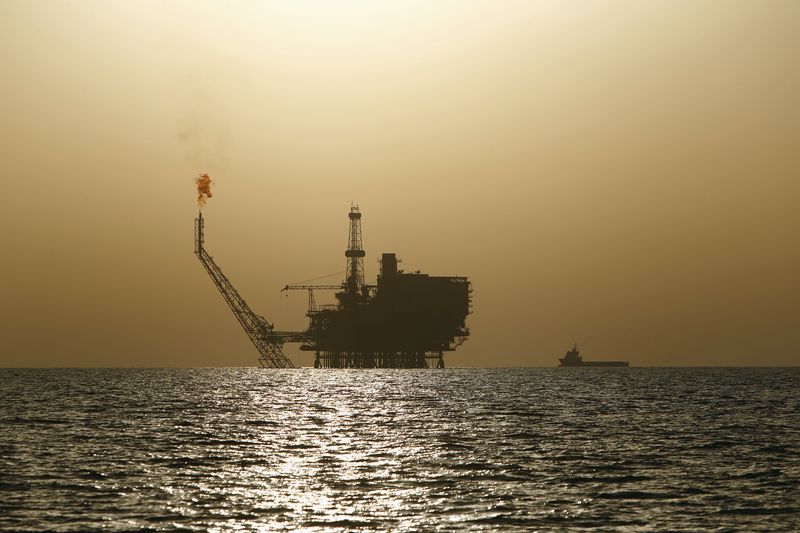By Stephanie Kelly
NEW YORK (Reuters) - More than three years after the collapse in oil prices, energy-producing states such as Alaska, Oklahoma and Louisiana continue to struggle with budget shortfalls, and fiscal 2019 is no different as lawmakers seek permanent revenue solutions.
States that benefited from the energy boom were left reeling when prices collapsed in mid-2014, leading to a continuous scramble to make up for lost oil-related revenue.
Alaska, which depended heavily on revenues from oil activity, dealt with the sudden fiscal pressures by tapping into reserve funds and cutting spending. Some say the fiscal uncertainty surrounding the state has impacted private sector investment.
The state's proposed capital budget for fiscal 2019 is $150 million, down from nearly $2 billion in fiscal 2013, a drop of more than 90 percent. It still faces a budget deficit of $2.5 billion for next year.
"Less state funding doesn't instill a lot of confidence in private investors," said John MacKinnon, the executive director of the Associated General Contractors of Alaska.
As a result, employees in the state's construction industry are working fewer hours, MacKinnon said, noting that carpenters' hours were down by 20 percent in 2017 versus 2016.
The amount of money invested by public and private sources in construction projects in Alaska has decreased from $8.82 billion in 2014 to a projected $6.57 billion in 2018, according to data from the Institute of Social and Economic Research (ISER) at the University of Alaska Anchorage.
And the number of Alaskans employed in the construction business statewide, excluding public and self-employed workers, has also decreased from an average of 17,075 workers in 2014 to a projected average of 14,962 in 2017, the data said.
BONDING IN THE LAST FRONTIER
Alaska has also not authorized any new General Obligation bond issuance since 2012 when voters approved of $449.9 million of debt, according to the state's Office of Management and Budget (OMB).
As of June 30, $110.35 million of that debt was unissued, the office said.
"The fiscal situation is such that taking on additional liabilities is not a smart thing to do at the moment," said Scott Goldsmith, professor emeritus of economics at ISER.
Barring any legislative actions, the state's constitutional budget reserve — its primary reserve account — could be empty by April 2019, said Pat Pitney, the OMB's director.
Pitney said she also feels that private investment has been pulling back from the state.
"We have businessmen saying, 'I'm not investing in Alaska because there's uncertainty, and I'm putting my money somewhere else or I'm going to wait,'" she said.
BEYOND ALASKA
In Louisiana and Oklahoma, legislators also face budget deficits for the next fiscal year, having attempted to fill past shortfalls with temporary tax increases and one-time fixes, respectively.
Louisiana faces a fiscal cliff totaling roughly $1 billion because of a sunset on temporary tax increases adopted in fiscal 2015 and fiscal 2016 and set to expire in mid-2018. The decline in the oil industry in part drove the tax increases, said Manfred Dix, an economist with the state's Office of Planning and Budget.
"We cannot depend on crude oil dramatically increasing again," Dix said.
Oklahoma's challenges stem from a combination of low oil prices and extensive one-time actions from the legislature, said Marcy Block, an analyst at Fitch Ratings. The state faces a deficit of about $167 million.
Oklahoma Governor Mary Fallin has criticized the legislature in the past for failing to find long-term solutions to recurring deficits.
LOWER FOR LONGER?
While oil prices have ticked up in the last half year, analysts and government employees reached by Reuters do not expect a return to their 2014 levels anytime soon — if at all.
U.S. crude (CLc1) last clocked $61.18 per barrel, far below the more than $100 per barrel price it hit in 2014.
Credit agency S&P Global Ratings said on Tuesday that oil-producing states in 2018 should experience positive economic growth.
However, Fitch said on Jan. 25 that while oil prices and production have edged higher, states seem to be tempering their revenue and price forecasts.
"We are going to be low for a while, and they (states) need to align their budgets to that fact," Fitch's Block said.
